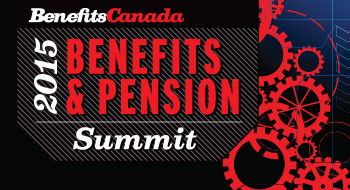

Paying close attention to plan members and offering them customized advice is the key to running a successful DC plan—this is what Eastern Construction discovered with its own DC plan.
The way the Toronto-based construction company measures success is by looking at whether employees are able to retire from the plan at the age they wish to retire with sufficient balances, explained Rob Jacobi, president at Tenzing Pension & Investment Services Inc., the consulting firm used by Eastern.
Read: How to improve DC communications
“It’s [a plan] that’s heavily promoted by the employer. The employees themselves understand how it works; they value it,” Jacobi said of Eastern’s group RRSP, speaking at Benefits Canada’s 2015 Benefits and Pensions Summit.
After six months of employment, employees can sign up for the plan if they choose to; after one year of service, the plan becomes mandatory, explained Terry Doyle, director of human resources at Eastern, speaking at the same event.
The employee contribution minimum is 5% and the company offers a 5% match, Doyle added.
After employees become eligible to join the plan, the company sends them a welcome package about the plan, along with contact information for the in-house plan administrator. Then the company follows up with the employee about the plan every 30 days until the mandatory one-year mark.
Read: DC communication: Decumulation dilemma
“Many of you might be thinking, ‘this is a lot of work and ongoing communication.’ It is,” Doyle said, adding, however, that the communication is worth it and that the company provides education to employees throughout their careers.
With its education campaign, the company targets three demographic groups of employees—a “getting started” crowd, a “getting serious” crowd and a “getting close” crowd. For example, Doyle said, the company organizes regular cocktail receptions where newly retired former employees speak about their experiences. The “getting closer” crowd is invited to network with these retirees.
Eastern also offers employees detailed assistance with their investment decisions. Investment is an area that DC members generally need help with, said Jacobi.
Eastern’s investment assistance has several key components. The first one is face-to-face meetings. “This is different than just having an advisor attached to the plan and a toll-free number,” said Jacobi. “Members are often hesitant to ask for investment advice. They don’t even know how to start the conversation.”
So at least once a year, each member is invited for a personal investment counseling session to help him/her understand the plan rules and the investment process.
The other component of Eastern’s investment assistance is helping members implement an investment strategy, instead of just picking funds. This means helping employees decide how much risk to assume in their asset mixes depending on the amount of retirement income they’re targeting, Jacobi explained.
Eastern’s investment menu has mainly core funds, but it offers enough variety. “For each category to have at least two choices,” Jacobi said. But the company ensures that it doesn’t offer too many options or encourage people to take too much risk. “We want to avoid some aggressive funds that could lead people into trouble.”
The third aspect is getting to know plan members well to make sure they’re receiving appropriate investment recommendation. This means gathering details beyond members’ marital status and number of dependents and including information about their level of investment knowledge and their investment risk tolerance.
The fourth component of Eastern’s investment assistance is helping plan members complete the paperwork and sign it so the investment transactions can actually happen, Jacobi explained.
Read: Avoiding DC class actions
The fifth component is providing each plan member with notes after the initial face-to-face meeting. That way each member can later refer to a summary of what was said during the meeting, Jacobi explained.
The final aspect is an oversight committee with eight people. The committee tracks developments in the retirement plan, such as what funds and what asset managers are being used. The committee then compiles the information in the form of a report, which is summarized and included in the employee newsletter. The report helps the company decide whether it should delete or add certain funds, Jacobi explained.
All the articles from the event can be found in our special section: 2015 Benefits & Pension Summit Coverage.
